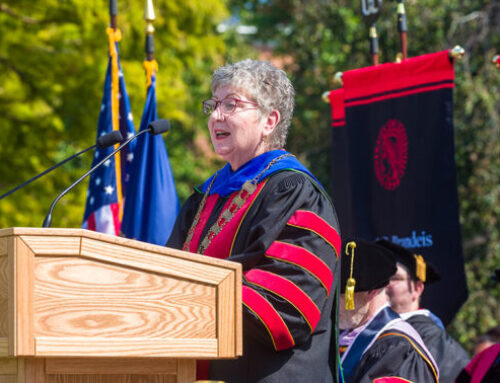By Sammie Hill–
Often overshadowed by “The Great Gatsby,” F. Scott Fitzgerald’s earlier novel, “The Beautiful and Damned,” is, in my opinion, his best work. Focusing on the relationship between Anthony Patch and Gloria Gilbert, “The Beautiful and Damned” examines the fleeting nature of beauty, youth, and love.
Anthony and Gloria fall in love as young adults in New York City. They spend their days indulging in the activities of the young and wealthy, and Fitzgerald propels us into their world of endless booze, extravagant parties, outrageous escapades and limitless wealth. They’re young, they’re rich, they’re beautiful, and they’re free. But are they happy?
While their reckless and carefree lifestyle seems blissful, throughout the novel we realize that Anthony and Gloria engage in these activities to distract themselves from reality. Anthony struggles with his career and with the emptiness he feels at the core of his being. He searches for meaning in a seemingly hopeless world, and he tries to numb his feelings of futility and despair with bourbon and benders, to no avail.
Gloria, who bases her self-worth almost entirely on her outward beauty, dreads the idea of growing older. She runs from reality in hopes of avoiding the inevitable.
Thus, while Anthony and Gloria appear to be the embodiment of the American dream, in reality they are slowly disintegrating.
Fitzgerald exposes their façade of freedom; we realize that in reality, they are slaves to their fears, their anxieties, and their desire for the superficial satisfactions of life. They appear to have it all, but their happiness, based on money, beauty, and popularity, does not last. Their love fades with their youth, as does their vitality.
By contrasting the enticing ecstasy of intoxication with the sobering loneliness of reality, Fitzgerald’s gift for depicting the disenchanting nature of life shines in this novel. For example, these characters begin their adult lives with enthusiasm and promise, but, over time, become damaged by the world. Their marriage, once saturated in love, ends in hatred. Anthony and Gloria chase the illusion of happiness, but they end up broken and bitter.
They must discover the fleeting nature of everything they consider important. In the novel, Fitzgerald confronts this ephemeral nature of life, saying, “Beautiful things grow to a certain height and then they fail and fade off, breathing out memories as they decay.”
College students can benefit from reading this book, for the college lifestyle mirrors the lifestyle of Anthony and Gloria’s in many ways. Wild parties complete with kegs, drugs, and beautiful people with an affinity for overindulgence often acts as an enticing lifestyle for students. Seeking an escape from the anxiety and pressure that comes along with being young adults, many students shirk responsibilities, lose themselves in weekend benders and engage in reckless behavior in the hopes that it will bring them happiness.
This lifestyle can seem attractive; however, “The Beautiful and Damned” reveals that these superficial parts of life don’t last, running from reality doesn’t result in happiness, and the crazy lifestyle isn’t all it’s cracked up to be.
Overall, “The Beautiful and Damned” is a universal story that everyone, especially college students in the prime of their youth, can relate to and learn from.
Photo courtesy of johnbarrowman.com






